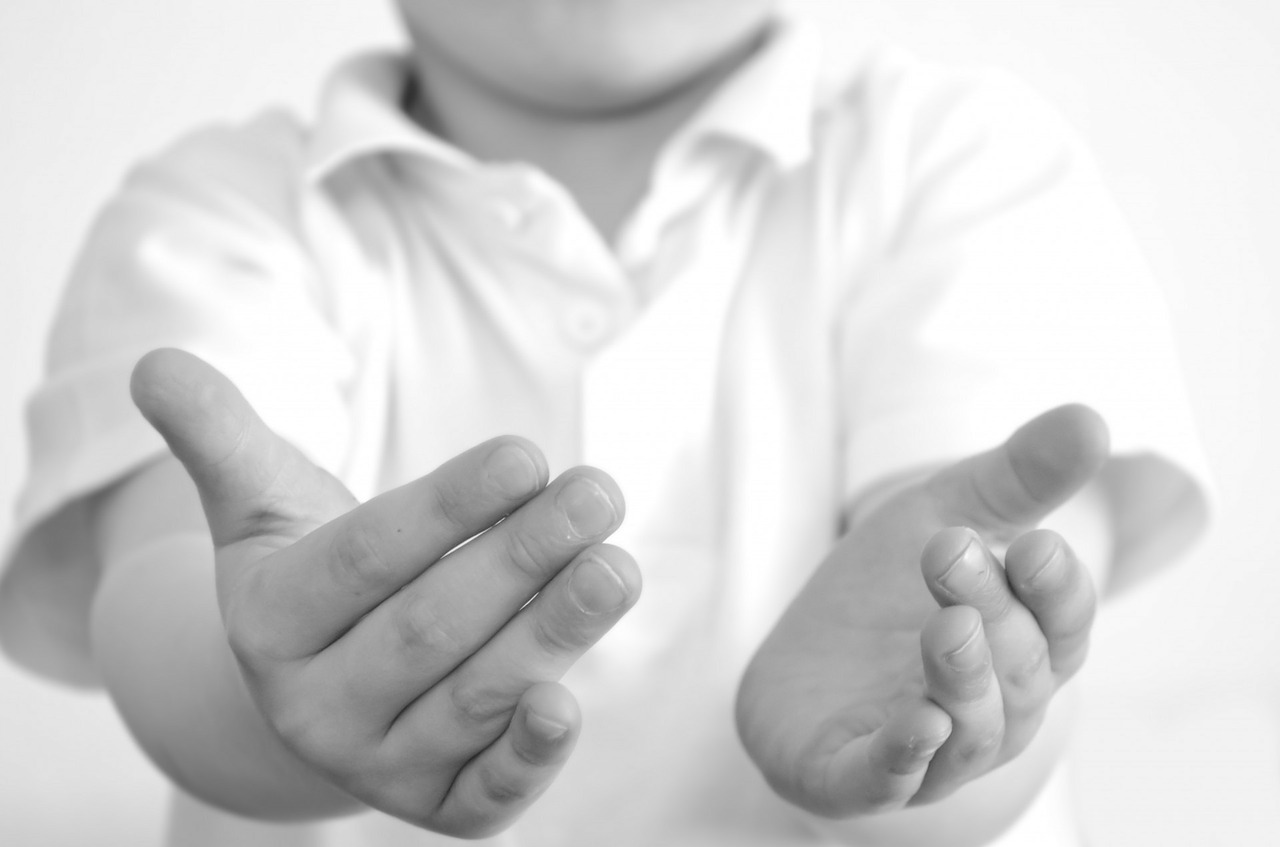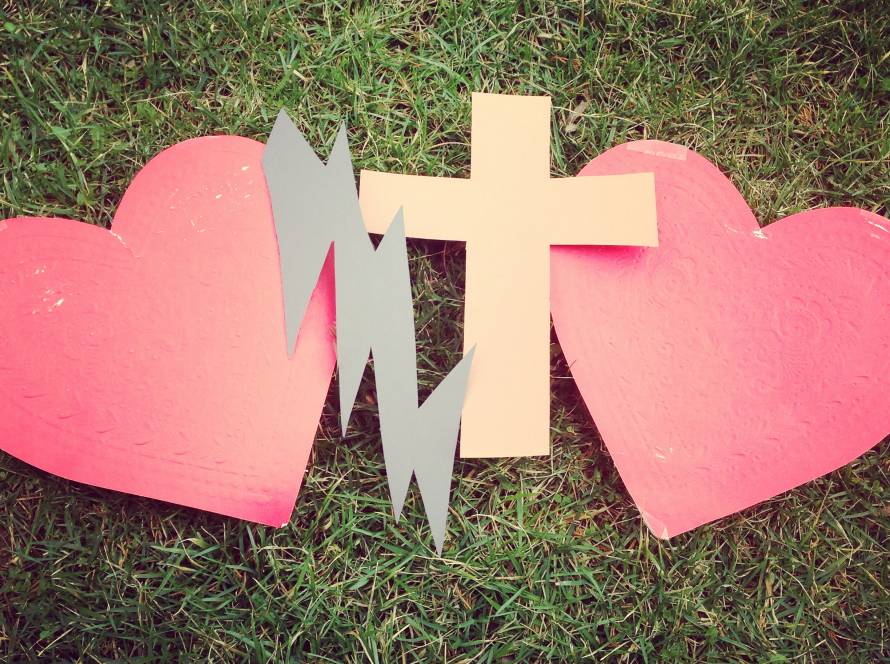Several years ago (2013) a series of tornados ripped through Oklahoma causing extensive amounts of damage and leaving many without homes, cars, and possessions. Stories about the tornados were all over the news and headlines so inevitably my daughters, ages 9 and 7, heard all about it. As you might suspect, there were lots of questions and concerns expressed, but on the way into school one morning, the conversation turned this direction:
Hannah: So all these people who lost their homes, where are they going to live?
Me: Well, many probably had insurance and after some time, they will rebuild their homes and move back in.
Naomi: But what about the kids?
Me: What about them?
Naomi: What about all their stuff that they lost?
Hannah: Yeah, will insurance cover all their toys?
Me: I don’t know, honey. I’m not sure how that works.
At this point I kinda “tuned out” their conversation and started back on the news but in a few minutes they interrupted.
Hannah: Okay, Mom, we figured out what we can do.
Me: Hmm, what’s that?
Hannah: We’re going to hold a Toy Drive and we are going to gather toys and send them to the kids in Oklahoma.
Naomi: Yeah, I’m gonna talk to my teacher and my friends and I know they will have toys that they can give and I’ll give away half of my toys.
Me: Girls, I love your hearts so much, but it’s just not that simple.
Hannah: Yes it is, Mom. It’s that simple. We just have to help them.
Needless to say, there was no way I could say no to that, and in a few hours after some phone calls to a friend in Oklahoma that put in me in touch with a church in Oklahoma that worked with a great number of kids who had lost everything, we had an official toy drive up and running.
God blessed that Toy Drive.
We sent so many brand-new toys to Oklahoma along with new Bibles for all the kids and Fed Ex even covered the shipping for free. The church sent pictures of the children who were welcomed to the gym and given the chance to get five new toys to replace their lost ones along with Bibles and cards that were written from kids in PA to those in OK who needed some love. I’m still “friends” on Facebook with those who I’ve never met in person but who helped to make this moment a reality for all the children involved.

I tell this story because I just bet many of us have heard our children ask the question, “What can we do?” They’ve heard about the hurricanes, the floods, the fires and the families who have lost everything and they wonder what affect they can have on this world. The worst answer we can give is “Nothing.”
If we can give our kids a place, a role, a part to play that lets them know that what they do to help others matters, then we give them much more than that – we give them a way to put their faith into action, to love the least and to reach out to those most in need.
Now, hear me, I’m not suggesting that we just grab a bunch of stuff and send it to places in need. We’ve all seen the posts on social media about the “help” that is not truly help. Our toy drive was done in conjunction with a church that was reaching a specific group of children in need. There was a lot of communication and preparation to ensure that we didn’t send unneeded help. However, that doesn’t mean that we can’t do anything, In fact, there is so much we can do.
Here are just a few ideas that you might be able to involve your kids in when they ask, “What can we do?”
Give Financially
There are many, many relief organizations, most tend to be faith-based” that are doing the work on the ground but they need funds to operate. Check and see if your denomination or church has a group that works in disaster relief and if you choose to support them monetarily, let your kids be a part of that. See if they want to give a dime or a dollar. Let them know where you are sending your money and why. Allow them the opportunity to be discipled in what it is to be a generous giver.
Pray Consistently
Sometimes it’s easy to pray in the moment or at the time where need is the greatest, but what if you decided as a family that you would pray for a year for a region or for those affected by a disaster? During that time, look for stories to show how God is answering your prayers (If you look, you will find them!). Talk together about how prayer is something always available to us no matter what is going on; our lifeline to God!
Serve Responsibly
Perhaps there is a way that you can be part of a hands-on approach to disaster relief through something like a food or toy drive or by actually going and helping. Churches in the area affected are a good place to start with that. Usually their websites will give you information about what they are doing and how to help and often times there is a number to call if you want to get more details.
This link will take you to a list of organizations that do much of the work described above and offer other ideas on how to get involved. I’m not offering this because I am personally recommending these, but because it’s a place to get started.
The more important thing is that we take the time to be prepared to answer the question, “What can we do?” because eventually they will ask it. And if we can find a way to answer it that will teach them even a little bit more about what it means to be the hands and feet of Christ in the world today, we’ve helped form their faith that much more and made a lasting impression on their hearts.
For more information about
- Kids in Worship
- Determining which Type of Family Ministry model works best for your church
- Discipleship in Intergenerational community
- Encouraging the continued conversation through Practical Discipleship at Home
- Seminars, Workshops, Coaching
Check out to ReFocus Ministry or “like” our Facebook page. Join our conversation at theReFocus Family and Intergen Ministry group on Facebook.
About this Blog

Refocus Ministry was started by Christina Embree, wife to Pastor Luke, mom to three wonderful kids, and church planter at Plowshares BIC. With years of experience in family ministry and children’s ministry, she is passionate about seeing churches partnering with families to encourage faith formation at home and equipping parents to disciple their kids in the faith. She recently graduated with a Masters of Arts in Ministry focusing on Family, Youth and Children’s Ministry at Wesley Seminary, she also blogs at www.refocusministry.org and is a contributing blogger at D6 Family and Seedbed


1 Comment